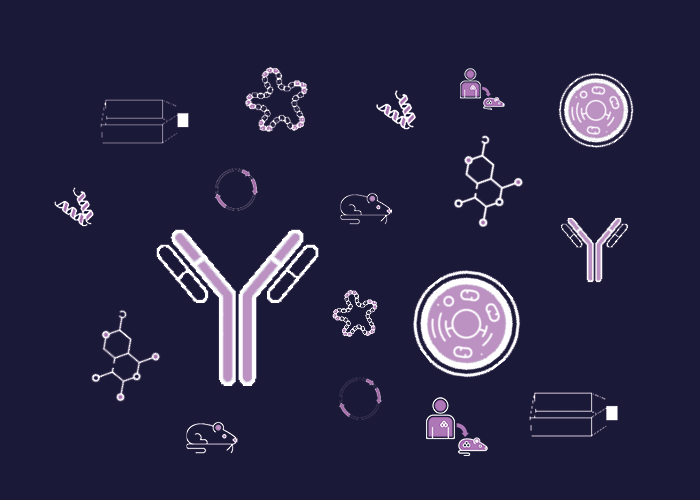
Cat. #151103
Anti-Leu1 [H65]
Cat. #: 151103
Sub-type: Primary antibody
Unit size: 100 ug
Availability: 3-4 weeks
Target: Leu1 (CD5)
Class: Monoclonal
Application: IHC ; IF ; IP ; RIA ; WB
Reactivity: Human
Host: Mouse
£300.00
This fee is applicable only for non-profit organisations. If you are a for-profit organisation or a researcher working on commercially-sponsored academic research, you will need to contact our licensing team for a commercial use license.
Contributor
Inventor: Walter Bodmer
Institute: Cancer Research UK, London Research Institute: Lincoln's Inn Fields
Tool Details
*FOR RESEARCH USE ONLY (for other uses, please contact the licensing team)
- Name: Anti-Leu1 [H65]
- Alternate name: CD5 Molecule 2; Lymphocyte Antigen T1/Leu-1; LEU1; CD5 Antigen; T1
- Research fields: Immunology;Stem cell biology
- Clone: H65
- Tool sub type: Primary antibody
- Class: Monoclonal
- Conjugation: Unconjugated
- Strain: Balb/c
- Reactivity: Human
- Host: Mouse
- Application: IHC ; IF ; IP ; RIA ; WB
- Description: CD5 is a good immunohistochemical marker for T-cells, although not as sensitive as CD3: it was used as a T-cell marker until monoclonal antibodies against CD3 were developed (see our UCHT1 anti-CD3 antibody). It is found in 76% of T-cells neoplasms, but also in diffuse large B cell lymphoma, chronic lymphocytic leukemia, hairy cell leukemia, and mantle cell lymphoma cells. It is commonly lost in cutaneous T-cell lymphoma, and its absence can be used as an indicator of malignancy in this condition.
- Immunogen: HSB-2 cells.
- Isotype: IgG1
- Myeloma used: P3/NS1/1-Ag4.1
Target Details
- Target: Leu1 (CD5)
- Target background: CD5 is a good immunohistochemical marker for T-cells, although not as sensitive as CD3: it was used as a T-cell marker until monoclonal antibodies against CD3 were developed (see our UCHT1 anti-CD3 antibody). It is found in 76% of T-cells neoplasms, but also in diffuse large B cell lymphoma, chronic lymphocytic leukemia, hairy cell leukemia, and mantle cell lymphoma cells. It is commonly lost in cutaneous T-cell lymphoma, and its absence can be used as an indicator of malignancy in this condition.
Applications
- Application: IHC ; IF ; IP ; RIA ; WB
Handling
- Format: Liquid
- Concentration: 1 mg/ml
- Unit size: 100 ug
- Storage buffer: PBS with 0.02% azide
- Storage conditions: -15° C to -25° C
- Shipping conditions: Dry ice
References
- 1st International Workshop on Human Leucocyte Differentiation Antigens (CodeT34) Paris. 1982.



